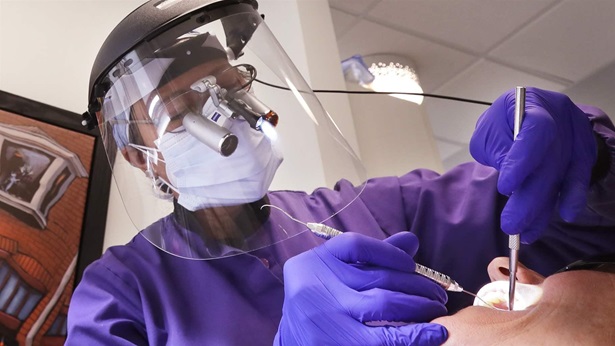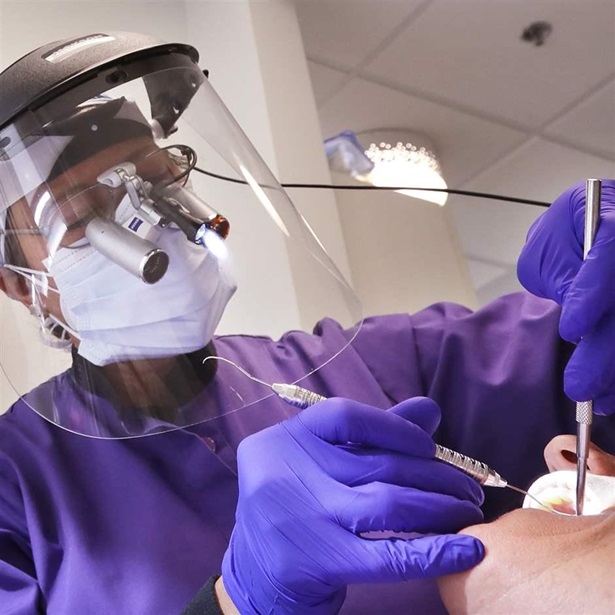Minnesota Dental Therapists Face Employment Challenges Amid Pandemic
Practices forced to scale back services at the height of the coronavirus outbreak
The health care industry faced widespread unemployment as a result of the unprecedented coronavirus pandemic. In April, employment in health care declined by 1.4 million jobs, led by those in dental offices with over 500,000. A recent survey from the Minnesota Dental Therapy Association (MDTA) shows how the pandemic has affected employment of dental therapists, midlevel providers who are similar to physician assistants in medicine.
Following federal recommendations to delay all nonessential medical and dental procedures, Minnesota Governor Tim Walz issued an executive order March 19 requiring that all nonemergency and elective dental care be postponed indefinitely. By the beginning of April, 93% of dental practices in Minnesota were open only for emergency services, and 6% had temporarily closed their doors to all patients. Less than 1% of practices were open for all services. Over 90% of practices reported that their total patient volume was less than 5% of their pre-pandemic load, and over 80% said their total collections were less than 5% of normal.
Dentists in Minnesota have been allowed to hire dental therapists since 2009. The Legislature took this step to help address significant oral health disparities affecting Minnesota’s low-income residents, people of color, and older adults. A growing body of evidence shows that the integration of dental therapists in the Minnesota dental care delivery system has helped increase access to care and enhance productivity and earnings for practices and clinics. Currently, there are 101 licensed dental therapists in Minnesota.
In April, the MDTA conducted a survey to assess the employment status of dental therapists in Minnesota in the wake of the coronavirus. The survey was sent to 85 licensed dental therapists, and 58 responded. About 90% of the respondents were enrolled to receive benefits from their employers before the pandemic. Over half (57%) still have access to their benefits regardless of their current employment status. Nearly 30% reported that they have “limited finances remaining” or are “financially struggling.”
Only seven (12%) reported that they were working either full time or on a reduced schedule, and of those, five are employed by nonprofit practices or clinics, three of which are located in the seven-county metropolitan area that represents the Twin Cities, and two in rural regions. The other two providers are in private practice, one in the Twin Cities and the other in a large city in Greater Minnesota, defined as the area outside the Twin Cities.
Of the dental therapists who are not working because of the pandemic, 53% are employed by private practices, about half of which are located in rural communities. Nearly 30% are in the Twin Cities, and 22% are in large cities in Greater Minnesota. Among the dental therapists who are not working and are employed by nonprofit practices and clinics, about 46% are employed in the Twin Cities, nearly 38% are in rural regions, and about 17% are in cities in Greater Minnesota.
Danae Seyffer, an advanced dental therapist at a federally qualified health center in Minneapolis and a clinical assistant professor at the University of Minnesota School of Dentistry, is president of the MDTA. She said, “It has been a challenging time for the dental therapy profession as we learn to modify our practices to navigate the world with COVID-19. The Minnesota Dental Therapy Association is dedicated to helping our profession continue to advance and serve our patients during these challenging times. Our dental therapists around the state are looking forward to returning to their clinics safely to provide much-needed care to their communities.”
Since the survey results were released, Gov. Walz has loosened restrictions to allow dental practices to create protocols and treat cases that pose high risk to patients if further delayed. The MDTA plans to conduct a follow-up survey to assess how this new executive order has changed dental therapy employment.
Kristen Mizzi Angelone is a senior manager and Allison Corr is a research officer with The Pew Charitable Trusts’ dental campaign.


America’s Overdose Crisis
Sign up for our five-email course explaining the overdose crisis in America, the state of treatment access, and ways to improve care
Sign up

Dental Therapists in Minnesota Adjust Their Work in Response to COVID-19












